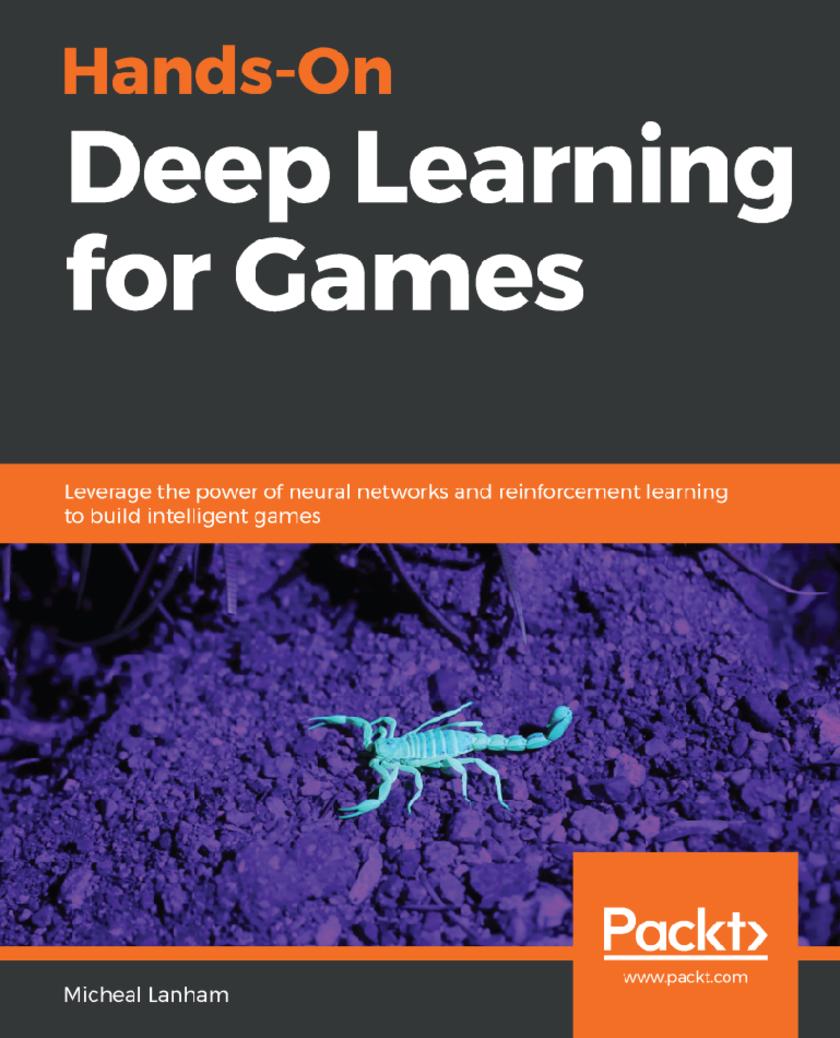
Hands-On Deep Learning for Games
¥73.02
Understand the core concepts of deep learning and deep reinforcement learning by applying them to develop games Key Features * Apply the power of deep learning to complex reasoning tasks by building a Game AI * Exploit the most recent developments in machine learning and AI for building smart games * Implement deep learning models and neural networks with Python Book Description The number of applications of deep learning and neural networks has multiplied in the last couple of years. Neural nets has enabled significant breakthroughs in everything from computer vision, voice generation, voice recognition and self-driving cars. Game development is also a key area where these techniques are being applied. This book will give an in depth view of the potential of deep learning and neural networks in game development. We will take a look at the foundations of multi-layer perceptron’s to using convolutional and recurrent networks. In applications from GANs that create music or textures to self-driving cars and chatbots. Then we introduce deep reinforcement learning through the multi-armed bandit problem and other OpenAI Gym environments. As we progress through the book we will gain insights about DRL techniques such as Motivated Reinforcement Learning with Curiosity and Curriculum Learning. We also take a closer look at deep reinforcement learning and in particular the Unity ML-Agents toolkit. By the end of the book, we will look at how to apply DRL and the ML-Agents toolkit to enhance, test and automate your games or simulations. Finally, we will cover your possible next steps and possible areas for future learning. What you will learn * Learn the foundations of neural networks and deep learning. * Use advanced neural network architectures in applications to create music, textures, self driving cars and chatbots. * Understand the basics of reinforcement and DRL and how to apply it to solve a variety of problems. * Working with Unity ML-Agents toolkit and how to install, setup and run the kit. * Understand core concepts of DRL and the differences between discrete and continuous action environments. * Use several advanced forms of learning in various scenarios from developing agents to testing games. Who this book is for This books is for game developers who wish to create highly interactive games by leveraging the power of machine and deep learning. No prior knowledge of machine learning, deep learning or neural networks is required this book will teach those concepts from scratch. A good understanding of Python is required.
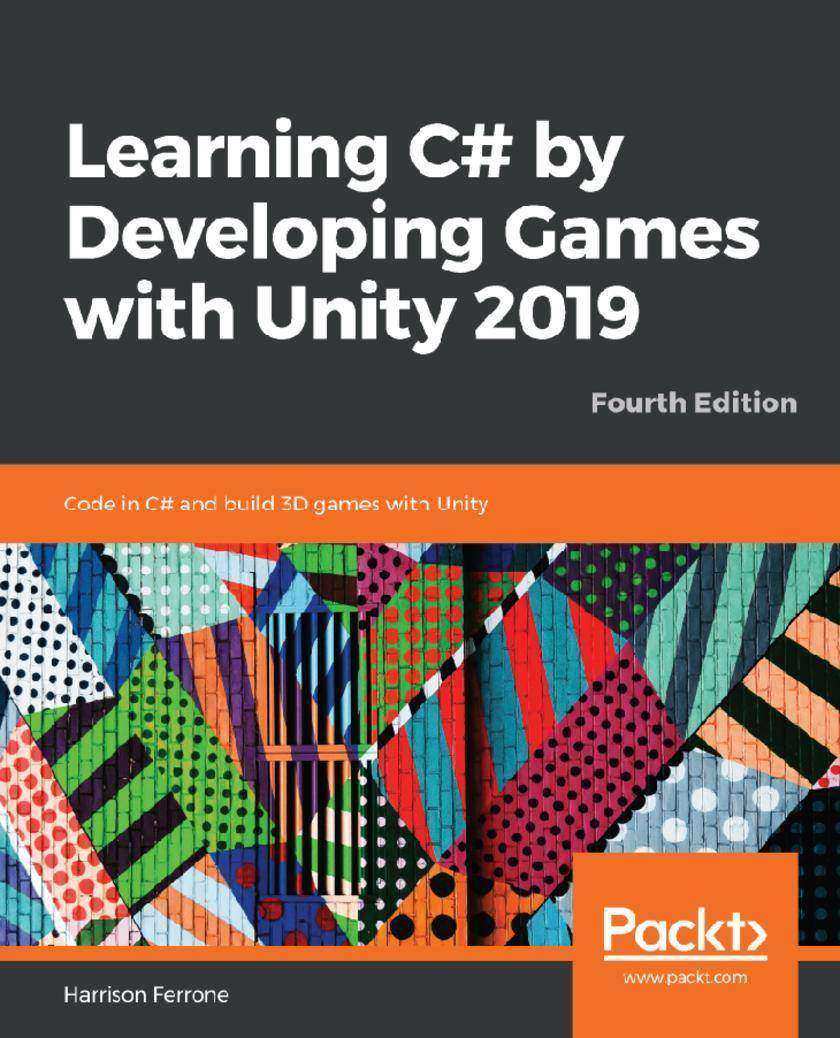
Learning C# by Developing Games with Unity 2019
¥73.02
Understand the fundamentals of C# programming and get started with coding from ground up in an engaging and practical manner Key Features * Beginner's guide to getting started with software development concepts from a macro level * Leverage the power of the latest C# in solving the complex programming problems * Learn to script and customize your 3D games and implement animation techniques to make them engaging Book Description Learning to program in today’s technical landscape can be a daunting task, especially when faced with the sheer number of languages you have to choose from. Luckily, Learning C# with Unity 2019 removes the guesswork and starts you off on the path to becoming a confident, and competent, programmer using game development with Unity. You’ll start off small by learning the building blocks of programming, from variables, methods, and conditional statements to classes and object-oriented systems. After you have the basics under your belt you’ll explore the Unity interface, creating C# scripts, and translating your newfound knowledge into simple game mechanics. Throughout this journey, you’ll get hands-on experience with programming best practices and macro-level topics such as manager classes and flexible application architecture. By the end of the book, you’ll be familiar with intermediate C# topics like generics, delegates, and events, setting you up to take on projects of your own. What you will learn * Understand programming fundamentals with practice examples in C# * Explore the interface and features of Unity 2019 * Learn C# programming syntax from scratch * Create a game design document and prototype level * Explore intermediate programming topics and best practices * Implement game mechanics, interactions, and UI elements with C# Who this book is for The book caters to developers and programmers who want to get started with C# programming in a fun and engaging manner. Anyone who wants to build games and script in C# language and Unity can take this book up. No prior programming or Unity experience is required.

Hands-On G Suite for Administrators
¥73.02
Effectively implement and administer business solutions on any scale in a cost-effective way to have a competitive advantage using Gsuite Key Features * Enhance administration with Admin console and Google Apps Script * Prepare for the G suite certification using the concepts in the book * Learn how to use reports to monitor, troubleshoot and optimize G Suite Book Description Hands-On G Suite for Administrators is a comprehensive hands-on guide to G Suite Administration that will prepare you with all you need to know to become a certified G Suite Administrator, ready to handle all the business scales, from a small office to a large enterprise. You will start by learning the main features, tools, and services from G Suite for Business and then, you will explore all it has to offer and the best practices, so you can make the most out of it. We will explore G Suite tools in depth so you and your team get everything you need -combination of tools, settings and practices- to succeed in an intuitive, safe and collaborative way. While learning G Suite tools you will also learn how to use Google Sites and App Maker, to create from your corporate site to internal tools, live reports that seamlessly integrate with live documents, and advanced Google Services. Finally, you will learn how to set up, analyze and enforce Security, Privacy for your business and how to efficiently troubleshoot a wide variety of issues. What you will learn * Setting up G Suite for the business account * Work with the advanced setup of additional business domains and administrate users in multiple * Explore Guite's extensive set of features to cover your team’s creation and collaboration needs * Setup, manage and analyze your security to prevent, find or fix any security problem in G Suite * Manage Mobile devices and integrate with third-party apps * Create cloud documents, working alone or collaborating in real time Who this book is for System administrators, cloud administrators, business professionals, and aspirants of G Suite admin certificate wanting to master implementing G Suite tools for various admin tasks and effectively implement the G Suite administration for business
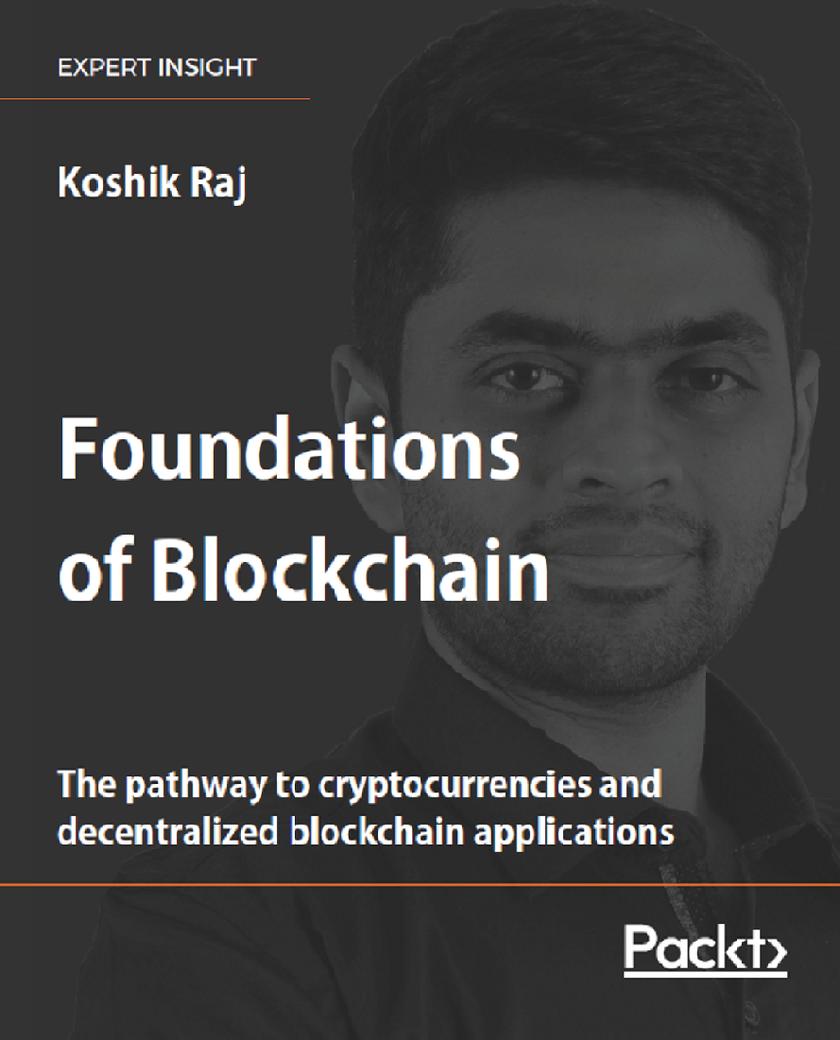
Foundations of Blockchain
¥73.02
Learn the foundations of blockchain technology - its core concepts and algorithmic solutions across cryptography, peer-to-peer technology, and game theory. Key Features * Learn the core concepts and foundations of the blockchain and cryptocurrencies * Understand the protocols and algorithms behind decentralized applications * Master how to architect, build, and optimize blockchain applications Book Description Blockchain technology is a combination of three popular concepts: cryptography, peer-to-peer networking, and game theory. This book is for anyone who wants to dive into blockchain from first principles and learn how decentralized applications and cryptocurrencies really work. This book begins with an overview of blockchain technology, including key definitions, its purposes and characteristics, so you can assess the full potential of blockchain. All essential aspects of cryptography are then presented, as the backbone of blockchain. For readers who want to study the underlying algorithms of blockchain, you’ll see Python implementations throughout. You’ll then learn how blockchain architecture can create decentralized applications. You’ll see how blockchain achieves decentralization through peer-to-peer networking, and how a simple blockchain can be built in a P2P network. You’ll learn how these elements can implement a cryptocurrency such as Bitcoin, and the wider applications of blockchain work through smart contracts. Blockchain optimization techniques, and blockchain security strategies are then presented. To complete this foundation, we consider blockchain applications in the financial and non-financial sectors, and also analyze the future of blockchain. A study of blockchain use cases includes supply chains, payment systems, crowdfunding, and DAOs, which rounds out your foundation in blockchain technology. What you will learn * The core concepts and technical foundations of blockchain * The algorithmic principles and solutions that make up blockchain and cryptocurrencies * Blockchain cryptography explained in detail * How to realize blockchain projects with hands-on Python code * How to architect the blockchain and blockchain applications * Decentralized application development with MultiChain, NEO, and Ethereum * Optimizing and enhancing blockchain performance and security * Classical blockchain use cases and how to implement them Who this book is for This book is for anyone who wants to dive into blockchain technology from first principles and build a foundational knowledge of blockchain. Familiarity with Python will be helpful if you want to follow how the blockchain protocols are implemented. For readers who are blockchain application developers, most of the applications used in this book can be executed on any platform.
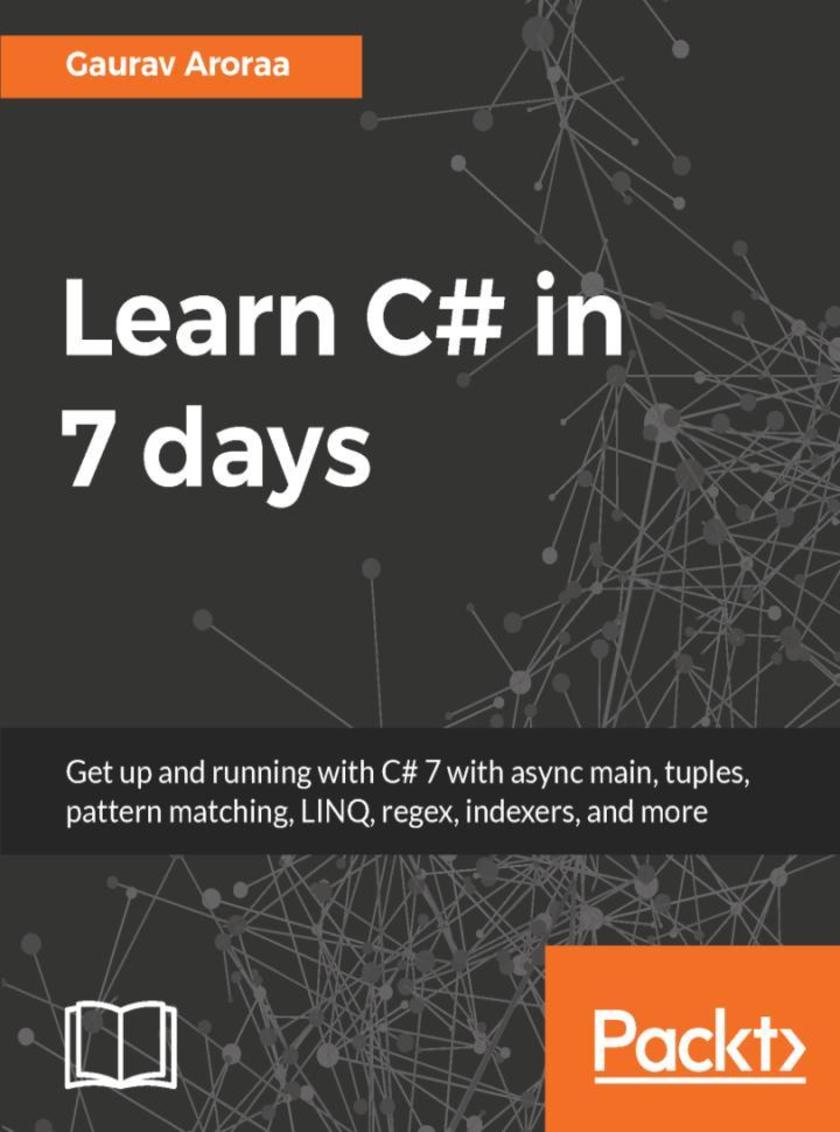
Learn C# in 7 days
¥71.93
Learn C# in 7 days with practical examples, build a foundation for C# programming, and boost your skills to an advanced level About This Book ? Learn the basics of C# in 7 days ? Works as a reference guide describing the major features of C# ? Build easy and simple code through real-world example scenarios Who This Book Is For The book is for aspiring developers and absolute novices who want to get started with the world of programming. You do not need any knowledge of C# for this book. What You Will Learn ? Understand and set up the .NET environment ? Code in C# using the Visual Studio 2017 RC (preferable community edition) IDE ? Define variables, syntax, control flows, statements, and arrays etc through examples ? Understand the concepts of Object-Oriented Programming using C# ? Get acquainted with attributes, collection, generics, and LINQ ? Get your hands on class members such as Modifiers, Methods, Properties, Indexers, File I/O, Exception Handling, and Regex ? Build a real-world application using C# 7 In Detail This book takes a unique approach to teach C# to absolute beginners. You’ll learn the basics of the language in seven days. It takes a practical approach to explain the important concepts that build the foundation of the C# programming language. The book begins by teaching you the basic fundamentals using real-world practical examples and gets you acquainted with C# programming. We cover some important features and nuances of the language in a hands-on way, helping you grasp the concepts in a fluid manner. Later, you’ll explore the concepts of Object-Oriented Programming (OOP) through a real-world example. Then we dive into advanced-level concepts such as generics and collections, and you’ll get acquainted with objects and LINQ. Towards the end, you’ll build an application that covers all the concepts explained in the book. By the end of this book, you will have next-level skills and a good knowledge of the fundamentals of C#. Style and approach Fast paced guide to get you up-to-speed with the language. Every chapter is followed by an exercise that focuses on building something with the language. The codes of the exercises can be found on the Packt website
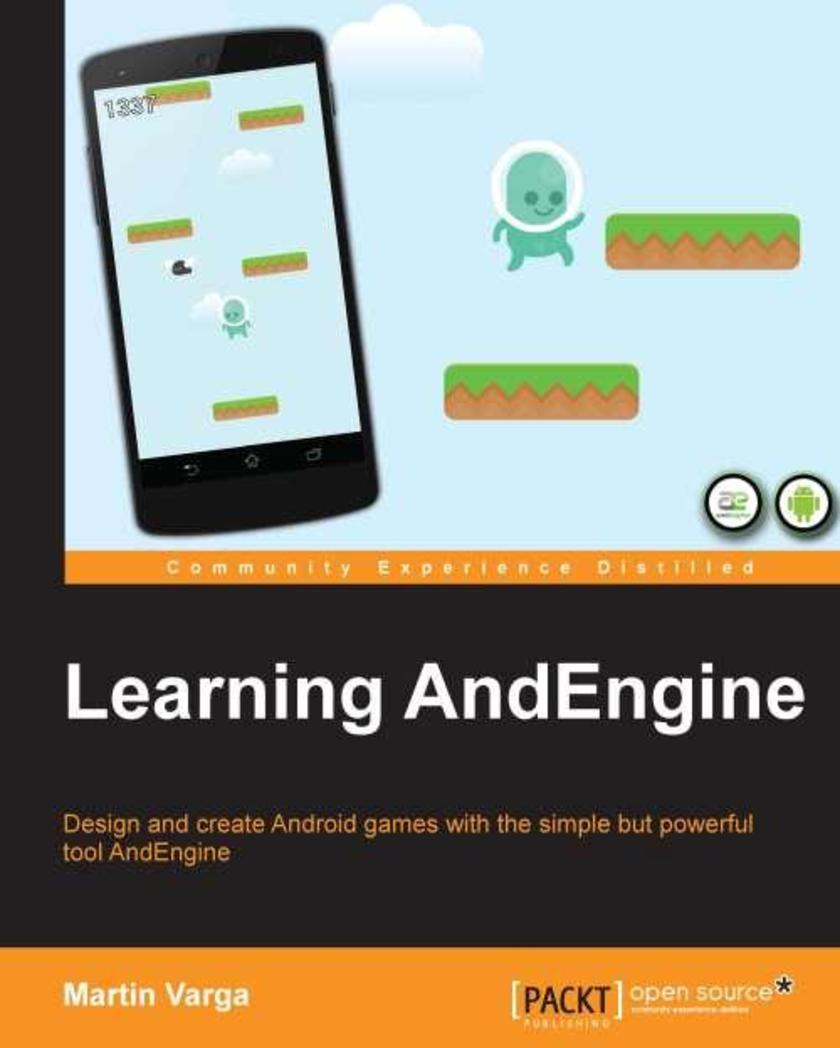
Learning AndEngine
¥71.93
If you are a beginner to AndEngine, or mobile game development in general, and you are looking for a simple way to start making games for Android, this book is for you. You should already know the basics of Java programming, but no previous game development experience is required.
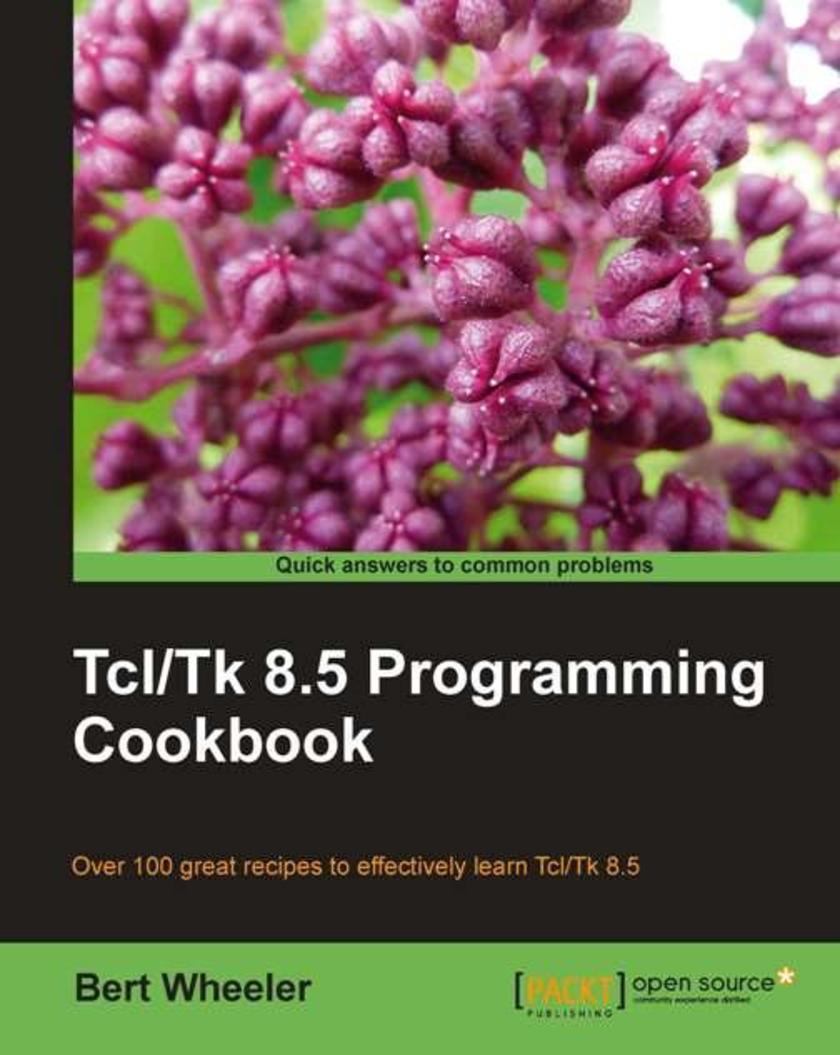
Tcl/Tk 8.5 Programming Cookbook
¥71.93
This book provides a step-by-step approach to the Tcl/Tk language with the help of re-usable examples and images. It is a series of carefully organized, easy-to-follow, standalone recipes to solve your queries. Whether you go through the recipes chapter-wise or pick up any recipe randomly, you will find clear and complete explanation of the task covered in the recipe. If you are a beginner interested in adding Tcl/Tk 8.5 to your list of languages, or an experienced Tcl/Tk programmer looking to sharpen your knowledge, be assured, you will find your prefect guide in this book. Whether you are developing for your personal use or commercial applications, this book will provide you with a ready reference to the building blocks of Tcl/Tk 8.5

Mobile Device Exploitation Cookbook
¥71.93
Over 40 recipes to master mobile device penetration testing with open source tools About This Book Learn application exploitation for popular mobile platforms Improve the current security level for mobile platforms and applications Discover tricks of the trade with the help of code snippets and screenshots Who This Book Is For This book is intended for mobile security enthusiasts and penetration testers who wish to secure mobile devices to prevent attacks and discover vulnerabilities to protect devices. What You Will Learn Install and configure Android SDK and ADB Analyze Android Permission Model using ADB and bypass Android Lock Screen Protection Set up the iOS Development Environment - Xcode and iOS Simulator Create a Simple Android app and iOS app and run it in Emulator and Simulator respectively Set up the Android and iOS Pentesting Environment Explore mobile malware, reverse engineering, and code your own malware Audit Android and iOS apps using static and dynamic analysis Examine iOS App Data storage and Keychain security vulnerabilities Set up the Wireless Pentesting Lab for Mobile Devices Configure traffic interception with Android and intercept Traffic using Burp Suite and Wireshark Attack mobile applications by playing around with traffic and SSL certificates Set up the Blackberry and Windows Phone Development Environment and Simulator Setting up the Blackberry and Windows Phone Pentesting Environment Steal data from Blackberry and Windows phones applications In Detail Mobile attacks are on the rise. We are adapting ourselves to new and improved smartphones, gadgets, and their accessories, and with this network of smart things, come bigger risks. Threat exposure increases and the possibility of data losses increase. Exploitations of mobile devices are significant sources of such attacks. Mobile devices come with different platforms, such as Android and iOS. Each platform has its own feature-set, programming language, and a different set of tools. This means that each platform has different exploitation tricks, different malware, and requires a unique approach in regards to forensics or penetration testing. Device exploitation is a broad subject which is widely discussed, equally explored by both Whitehats and Blackhats. This cookbook recipes take you through a wide variety of exploitation techniques across popular mobile platforms. The journey starts with an introduction to basic exploits on mobile platforms and reverse engineering for Android and iOS platforms. Setup and use Android and iOS SDKs and the Pentesting environment. Understand more about basic malware attacks and learn how the malware are coded. Further, perform security testing of Android and iOS applications and audit mobile applications via static and dynamic analysis. Moving further, you'll get introduced to mobile device forensics. Attack mobile application traffic and overcome SSL, before moving on to penetration testing and exploitation. The book concludes with the basics of platforms and exploit tricks on BlackBerry and Windows Phone. By the end of the book, you will be able to use variety of exploitation techniques across popular mobile platforms with stress on Android and iOS. Style and approach This is a hands-on recipe guide that walks you through different aspects of mobile device exploitation and securing your mobile devices against vulnerabilities. Recipes are packed with useful code snippets and screenshots.
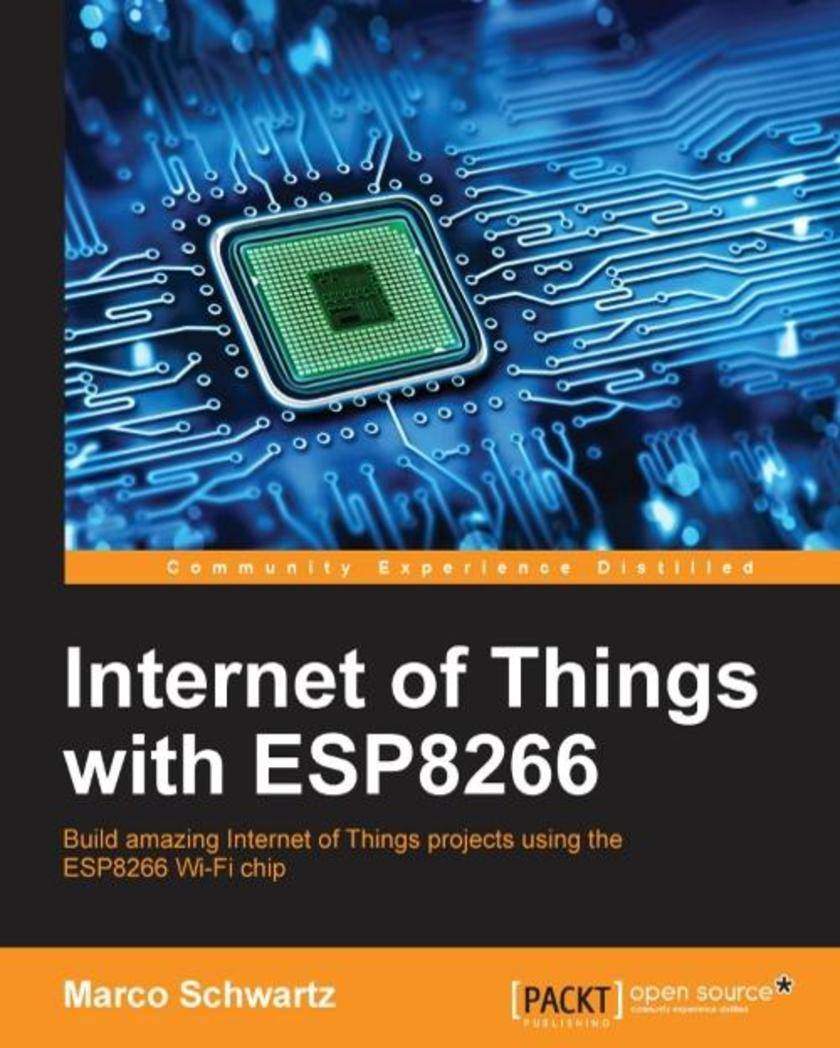
Internet of Things with ESP8266
¥71.93
Build amazing Internet of Things projects using the ESP8266 Wi-Fi chip About This Book Get to know the powerful and low cost ESP8266 and build interesting projects in the field of Internet of Things Configure your ESP8266 to the cloud and explore the networkable modules that will be utilized in the IoT projects This step-by-step guide teaches you the basics of IoT with ESP8266 and makes your life easier Who This Book Is For This book is for those who want to build powerful and inexpensive IoT projects using the ESP8266 WiFi chip, including those who are new to IoT, or those who already have experience with other platforms such as Arduino. What You Will Learn Control various devices from the cloud Interact with web services, such as Twitter or Facebook Make two ESP8266 boards communicate with each other via the cloud Send notifications to users of the ESP8266, via email, text message, or push notifications Build a physical device that indicates the current price of Bitcoin Build a simple home automation system that can be controlled from the cloud Create your own cloud platform to control ESP8266 devices In Detail The Internet of Things (IoT) is the network of objects such as physical things embedded with electronics, software, sensors, and connectivity, enabling data exchange. ESP8266 is a low cost WiFi microcontroller chip that has the ability to empower IoT and helps the exchange of information among various connected objects. ESP8266 consists of networkable microcontroller modules, and with this low cost chip, IoT is booming. This book will help deepen your knowledge of the ESP8266 WiFi chip platform and get you building exciting projects. Kick-starting with an introduction to the ESP8266 chip, we will demonstrate how to build a simple LED using the ESP8266. You will then learn how to read, send, and monitor data from the cloud. Next, you’ll see how to control your devices remotely from anywhere in the world. Furthermore, you’ll get to know how to use the ESP8266 to interact with web services such as Twitter and Facebook. In order to make several ESP8266s interact and exchange data without the need for human intervention, you will be introduced to the concept of machine-to-machine communication. The latter part of the book focuses more on projects, including a door lock controlled from the cloud, building a physical Bitcoin ticker, and doing wireless gardening. You’ll learn how to build a cloud-based ESP8266 home automation system and a cloud-controlled ESP8266 robot. Finally, you’ll discover how to build your own cloud platform to control ESP8266 devices. With this book, you will be able to create and program Internet of Things projects using the ESP8266 WiFi chip. Style and approach This is a step-by-step guide that provides great IOT projects with ESP8266. All the key concepts are explained details with the help of examples and demonstrations of the projects.
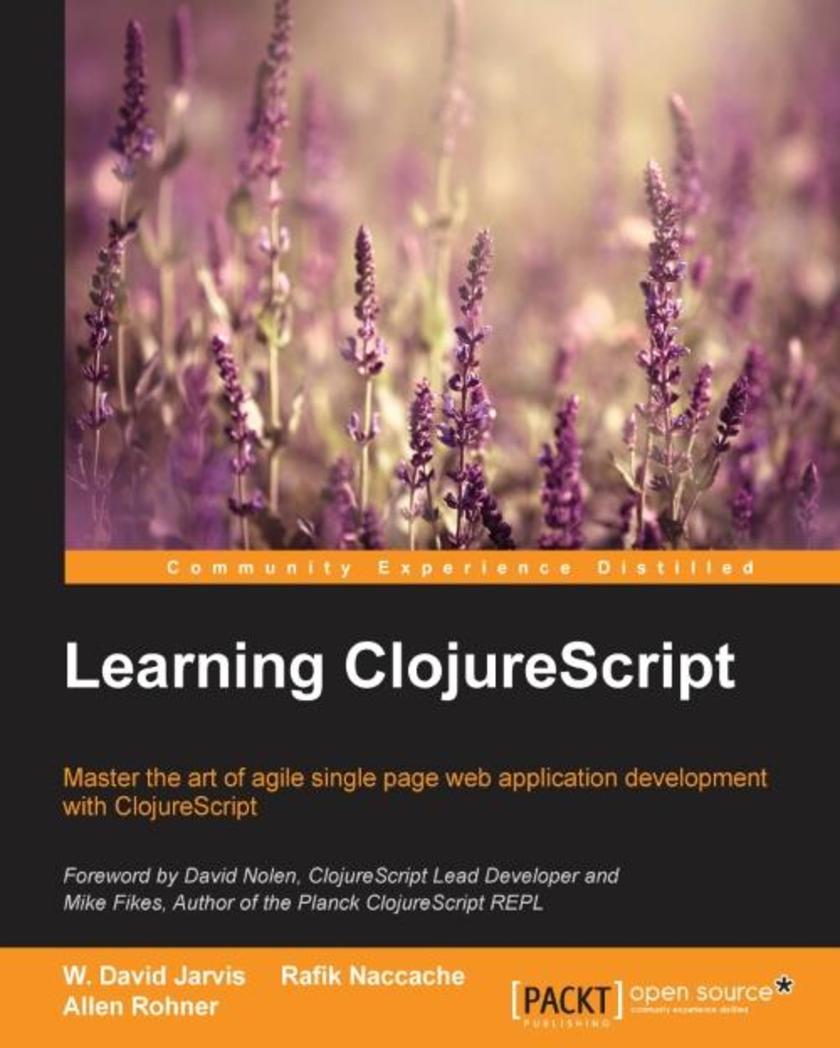
Learning ClojureScript
¥71.93
Master the art of agile single page web application development with ClojureScript About This Book Set up interactive development workflows for the browser or Node.js thanks to the ClojureScript ecosystem Learn the basics of interactive single page web app development taking advantage of the functional nature of ClojureScript Delve into advanced rich web application development concepts such as Om, along with core.async, using zippers and logic programming, and preparing code for production with testing or optimizing via the Google Closure Compiler Who This Book Is For This book is for web application developers who want to benefit from the power of ClojureScript to get an agile and highly productive development platform that targets mainly browser JavaScript. You are not required to be fluent in Clojure, but it will be easier for you if you have a basic understanding of browser and server-side JavaScript. What You Will Learn Understand how the ClojureScript compiler operates Set up interactive development workflows for ClojureScript Grasp the basics of the ClojureScript language, including basic syntax, data structures, variable scoping, namespaces, and finally the powerful sequence abstraction Delve into advanced concepts such as functional programming, macro writing, asynchronous programming, app routing, and real-time web Develop simple one page web applications Explore techniques to make your web apps aware of the external world through external or embedded database access or Oauth 2 integration Learn more advanced ClojureScript concepts like in app routing, real-time web Prepare your work for production, getting insights into optional type-checking, writing portable Clojure/ClojureScript code, and testing In Detail Clojure is an expressive language that makes it possible to easily tackle complex software development challenges. Its bias toward interactive development has made it a powerful tool, enabling high developer productivity. In this book, you will first learn how to construct an interactive development experience for ClojureScript.. You will be guided through ClojureScript language concepts, looking at the basics first, then being introduced to advanced concepts such as functional programming or macro writing. After that, we elaborate on the subject of single page web applications, showcasing how to build a simple one, then covering different possible enhancements. We move on to study more advanced ClojureScript concepts, where you will be shown how to address some complex algorithmic cases. Finally, you'll learn about optional type-checking for your programs, how you can write portable code, test it, and put the advanced compilation mode of the Google Closure Compiler to good use. Style and approach This book is a comprehensive reference guide on ClojureScript development for the front end, and will gradually help you master interactive ClojureScript development workflows, through detailed step-by-step information illustrated with annotated code samples.

Enduring CSS
¥71.93
Learn to really THINK about CSS, and how to create CSS that endures continual iteration, multiple authors, and yet always produces predictable results About This Book Address the problems of CSS at scale, avoiding the shortfalls of scaling CSS. The shortfalls of conventional approaches to scaling CSS. Develop consistent and enforceable selector naming conventions with ECSS. Learn how to organize project structure to more easily isolate and decouple visual components. Who This Book Is For This is a book for working CSS authors involved in large projects. This is a book that tackles create enduring CSS for large-scale projects. What You Will Learn The problems of CSS at scale—specificity, the cascade and styles intrinsically tied to element structure. The shortfalls of conventional approaches to scaling CSS. The ECSS methodology and the problems it solves. How to develop consistent and enforceable selector naming conventions with ECSS. How to organise project structure to more easily isolate and decouple visual components. How to handle state changes in the DOM with ARIA or override selectors. How to apply ECSS to web applications and visual modules. Considerations of CSS tooling and processing: Sass/PostCSS and linting. Addressing the notion of CSS selector speed with hard data and browser representative insight In Detail Learn with me, Ben Frain, about how to really THINK about CSS and how to use CSS for any size project! I'll show you how to write CSS that endures continual iteration, multiple authors, and yet always produces predictable results. Enduring CSS, often referred to as ECSS, offers you a robust and proven approach to authoring and maintaining style sheets at scale. Enduring CSS is not a book about writing CSS, as in the stuff inside the curly braces. This is a book showing you how to think about CSS, and be a smarter developer with that thinking! It's about the organisation and architecture of CSS—the parts outside the braces. I will help you think about the aspects of CSS development that become the most difficult part of writing CSS in larger projects. You’ll learn about the problems of authoring CSS at scale—including specificity, the cascade and styles intrinsically tied to document structure. I'll introduce you to the ECSS methodology, and show you how to develop consistent and enforceable selector naming conventions. We'll cover how to apply ECSS to your web applications and visual model, and how you can organize your project structure wisely, and handle visual state changes with ARIA, providing greater accessibility considerations. In addition, we'll take a deep look into CSS tooling and process considerations. Finally we will address performance considerations by examining topics such as CSS selector speed with hard data and browser-representative insight. Style and approach Learn with me, Ben Frain, about how to really think about CSS. This is a book to deal with writing CSS for large-scale, rapidly changing web projects and applications. This isn't a book about writing CSS, as in the stuff inside the curly braces - this is a book about the organisation and architecture of CSS; the parts outside the braces!

Unity 5.x 2D Game Development Blueprints
¥71.93
Explore the features of Unity 5 for 2D game development by building three amazing game projects About This Book Explore the 2D architecture of Unity 5, and the tools and techniques for developing 2D games Discover how to use Unity’s 2D tools, including Sprites, physics, and maps, to create different genres of games Practical tutorial on the intermediate and advanced development concepts in Unity 5 to create three interesting and fully functional games Who This Book Is For If you've got the basics of 2D development down, push your skills with the projects in this hands-on guide.Diversify your portfolio and learn the skills needed to build a range of awesome 2D game genres. What You Will Learn Explore and understand the vital role of sprites in 2D games Move, animate, and integrate sprites into a 2D platform game Set up User Interfaces (UIs) to keep track of the progress through the games Apply 2D Physics to improve gameplay believability Learn the foundation of Level Design and how to quickly create 2D Maps Discover NPC design, event triggers, and AI programming Create an epic strategy game, challenging all the skills acquired in the book In Detail Flexible, powerful, and full of rich features, Unity 5 is the engine of choice for AAA 2D and 3D game development. With comprehensive support for over 20 different platforms, Unity boasts a host of great new functions for making 2D games. Learn how to leverage these new options into awesome 2D games by building three complete game projects with the Unity game tutorials in this hands-on book. Get started with a quick overview of the principle concepts and techniques needed for making 2D games with Unity, then dive straight in to practical development. Build your own version of Super Mario Brothers as you learn how to animate sprites, work with physics, and construct brilliant UIs in order to create a platformer game. Go on a quest to create a RPG game discovering NPC design, event triggers, and AI programming. Finally, put your skills to the test against a real challenge - designing and constructing a complex strategy game that will draw on and develop all your previously learned skills. Style and approach This is a practical and easy-to-follow guide that starts with the basics and gradually delves into the process of creating 2D games. With step-by-step instructions on how to build three games, followed by a detailed explanation of each example, you will understand the concepts not just in theory, but also by applying the knowledge you gain in practice.
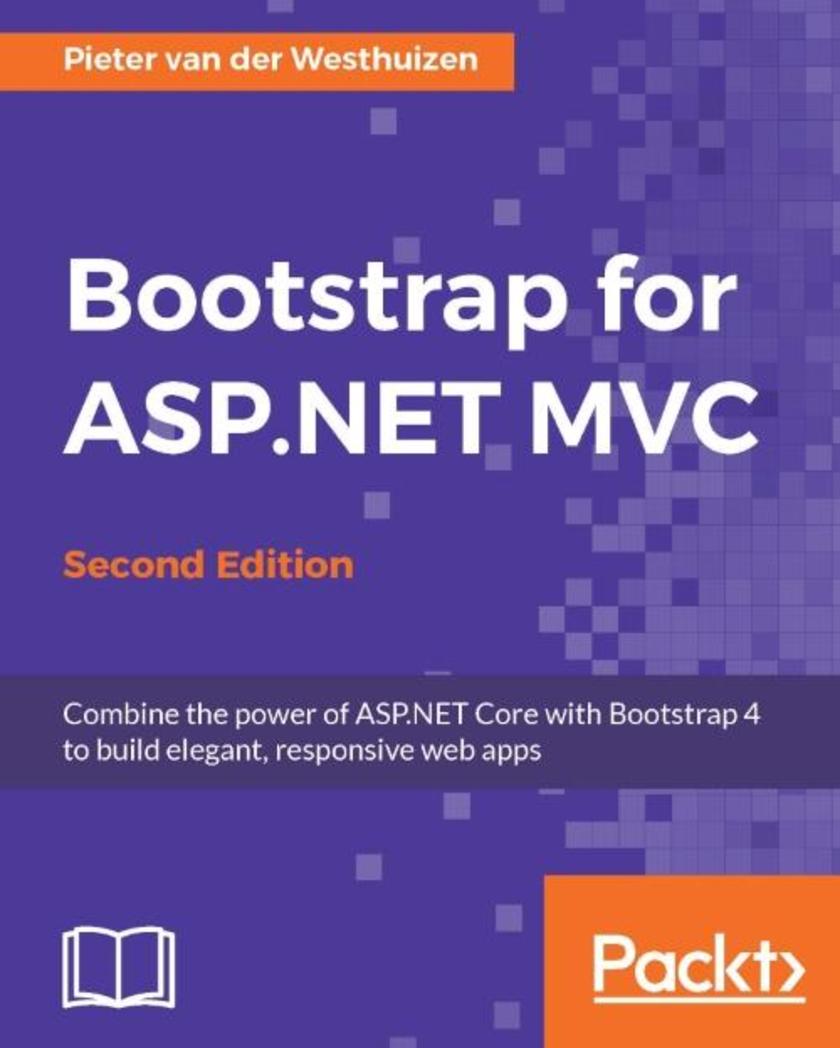
Bootstrap for ASP.NET MVC - Second Edition
¥71.93
Combine the power of ASP.NET Core with Bootstrap 4 to build elegant, responsive web apps About This Book Updated for Bootstrap 4 and ASP.Net MVC 6, this book shows how to take advantage of the latest new features introduced in both of these industry-leading frameworks Build responsive, mobile-ready apps by combining the power of ASP.NET MVC with Bootstrap Grasp the intricacies of Bootstrap and how to use it with ASP.NET MVC Build your own tools and helpers to assist you in creating ASP.NET MVC Bootstrap sites easily and quickly Master the use of Bootstrap components and plugins with ASP.NET MVC Who This Book Is For If you are an ASP.NET MVC developer and would like to know how to incorporate Bootstrap into your projects, then this book is invaluable to you. Developers with entry-level experience of ASP.NET MVC development and limited experience with Bootstrap will also benefit from this book. What You Will Learn Create a new ASP.NET MVC project that uses Bootstrap for its styling and learn how to include external libraries using the new package managers Learn to use the various Bootstrap CSS and HTML elements, and how to use the new Bootstrap 4 grid layout system Explore the different input groups and implement alerts, progress bars, and badges Explore JavaScript components by illustrating and walking through the process of using JavaScript/jQuery to add interactivity to Twitter Bootstrap components Build your own ASP.NET MVC helpers and tag helpers to reduce the amount of HTML needed to generate Bootstrap elements Convert a Bootstrap HTML template into a usable ASP.NET MVC project Use the jQuery DataTables plugin with Bootstrap and ASP.NET MVC In Detail One of the leading open source frontend frameworks, Bootstrap has undergone a significant change and introduced several features that make designing compelling, next-generation UIs much simpler. Integrating Bootstrap with ASP.NET's powerful components can further enhance its capabilities. This book guides you through the process of creating an ASP.NET MVC website from scratch using Bootstrap. After a primer on the fundamentals of Bootstrap, you will learn your way around and create a new ASP.NET MVC project in Visual Studio. You will move on to learn about the various Bootstrap components as well as techniques to include them in your own projects. The book includes practical examples to show you how to use open-source plugins with Bootstrap and ASP.NET MVC and guides you through building an ASP.NET MVC website using Bootstrap, utilizing layout and user-interface components. At the end of this book, you will find some valuable tips and tricks to help you get the most out of your Bootstrap-integrated and ASP.NET MVC-integrated website. Style and approach This is a compact, step-by-step guide that focuses on combining the power of Bootstrap with ASP.Net MVC to build next-generation web apps. With clear instructions, this book will show how to build a complete ASP.Net MVC-integrated web app from scratch using Bootstrap. It will also cover several tricks for integrating Bootstrap and ASP.Net MVC, and getting the most out of both frameworks.
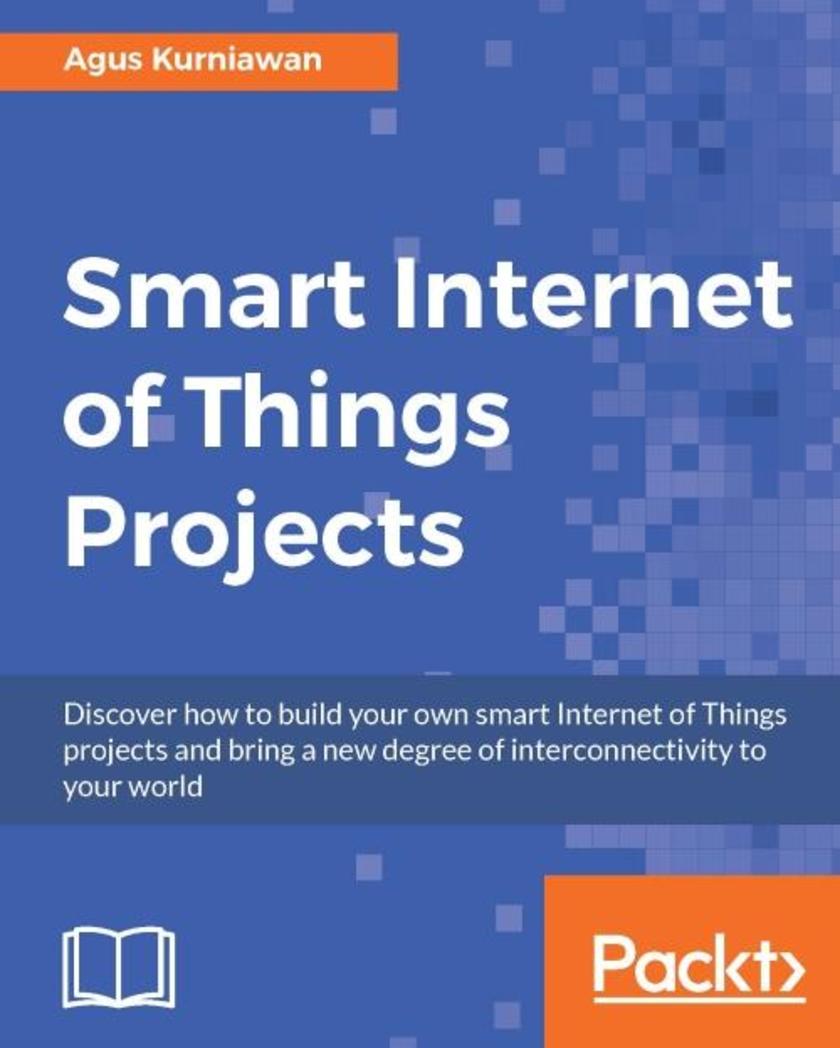
Smart Internet of Things Projects
¥71.93
Discover how to build your own smart Internet of Things projects and bring a new degree of interconnectivity to your world About This Book Learn how to extract and analyse data from physical devices and build smart IoT projects Master the skills of building enticing projects such as a neural network autonomous car, computer vision through a camera, and cloud-based IoT applications This project-based guide leverages revolutionary computing chips such as Raspberry Pi, Arduino, and so on Who This Book Is For If you are hobbyist who is keen on making smart IoT projects, then this book is for you. You should have a basic knowledge of Python. What You Will Learn Implement data science in your IoT projects and build a smart temperature controller Create a simple machine learning application and implement decision system concepts Develop a vision machine using OpenCV Build a robot car with manual and automatic control Implement speech modules with your own voice commands for IoT projects Connect IoT to a cloud-based server In Detail Internet of Things (IoT) is a groundbreaking technology that involves connecting numerous physical devices to the Internet and controlling them. Creating basic IoT projects is common, but imagine building smart IoT projects that can extract data from physical devices, thereby making decisions by themselves. Our book overcomes the challenge of analyzing data from physical devices and accomplishes all that your imagination can dream up by teaching you how to build smart IoT projects. Basic statistics and various applied algorithms in data science and machine learning are introduced to accelerate your knowledge of how to integrate a decision system into a physical device. This book contains IoT projects such as building a smart temperature controller, creating your own vision machine project, building an autonomous mobile robot car, controlling IoT projects through voice commands, building IoT applications utilizing cloud technology and data science, and many more. We will also leverage a small yet powerful IoT chip, Raspberry Pi with Arduino, in order to integrate a smart decision-making system in the IoT projects. Style and approach The book follows a project-based approach to building smart IoT projects using powerful boards such as the Raspberry Pi, Arduino, and the IoT chip.

BeagleBone By Example
¥71.93
Learn how to build physical computing systems using BeagleBone Black and Python About This Book Get to grips with the fundamentals of BeagleBone Leverage Python *s to program BeagleBone for your requirements Build four exciting projects, from home automation to a tele-controlled robot Who This Book Is For This book is intended for hobbyists and consumers who wish to create impressive projects using BeagleBone. You must be familiar with Python programming. What You Will Learn Program on BeagleBone Black using Python Interface sensors and actuators to BeagleBone Black Build your own real-time physical computing systems Connect physical computing systems to cloud servers Build your own home automation and home security system Build your own tele-controlled robot with real-time video streaming In Detail BeagleBone is a low cost, community-supported development platform to develop a variety of electronic projects. This book will introduce you to BeagleBone and get you building fun, cool, and innovative projects with it. Start with the specifications of BeagleBone Black and its operating systems, then get to grips with the GPIOs available in BeagleBone Black. Work through four types of exciting projects: building real-time physical computing systems, home automation, image processing for a security system, and building your own tele-controlled robot and learn the fundamentals of a variety of projects in a single book. By the end of this book, you will be able to write code for BeagleBone in order to operate hardware and impart decision-making capabilities with the help of efficient coding in Python. Style and approach This book is a step by step guide that will walk you through the fundamentals of building different projects using BeagleBone Black.
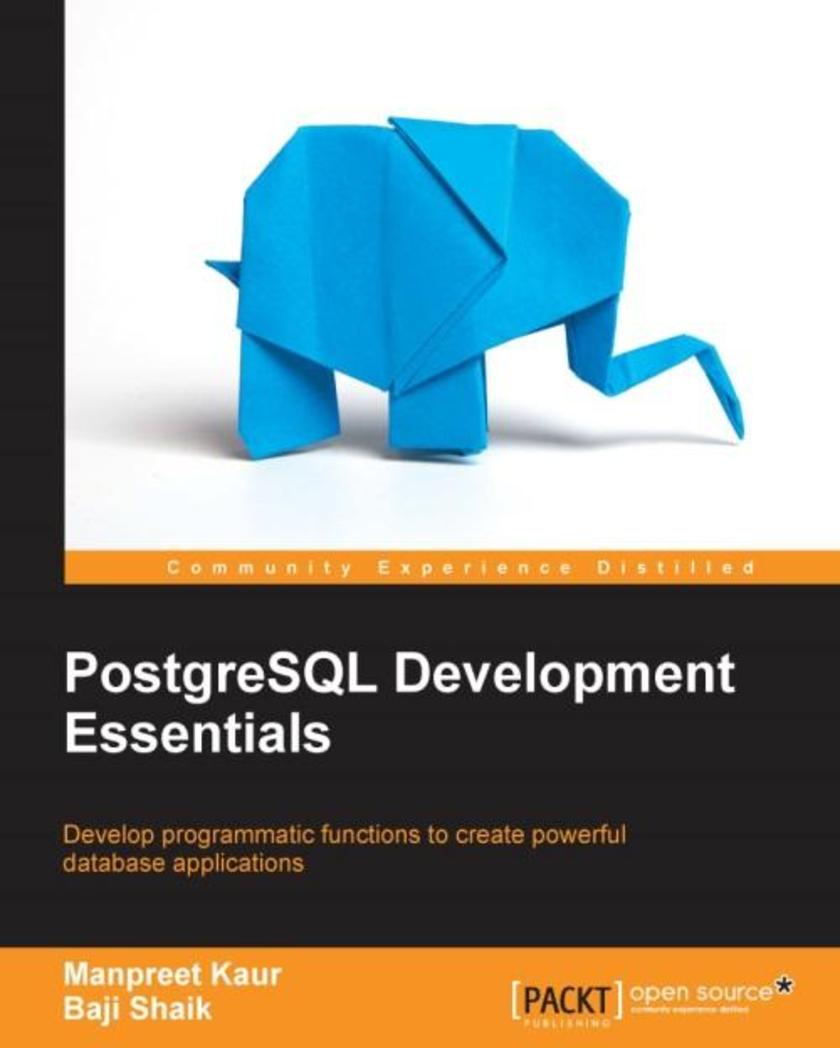
PostgreSQL Development Essentials
¥71.93
Develop programmatic functions to create powerful database applications About This Book Write complex SQL queries and design a robust database design that fits your application's need Improve database performance by indexing, partitioning tables, and query optimizing A comprehensive guide covering the advanced PostgreSQL concepts without any hassle Who This Book Is For If you are a PostgreSQL developer with a basic knowledge of PostgreSQL development and you’re want deeper knowledge to develop applications, then this book is for you. As this book does not cover basic installation and configurations, you should have PostgreSQL installed on your machine as a prerequisite. What You Will Learn Write more complex queries with advanced SQL queries Design a database that works with the application exactly the way you want Make the database work in extreme conditions by tuning, optimizing, partitioning, and indexing Develop applications in other programming languages such as Java and PHP Use extensions to get extra benefits in terms of functionality and performance Build an application that does not get locked by data manipulation Explore in-built db functions and data type conversions In Detail PostgreSQL is the most advanced open source database in the world. It is easy to install, configure, and maintain by following the documentation; however, it’s difficult to develop applications using programming languages and design databases accordingly. This book is what you need to get the most out of PostgreSQL You will begin with advanced SQL topics such as views, materialized views, and cursors, and learn about performing data type conversions. You will then perform trigger operations and use trigger functions in PostgreSQL. Next we walk through data modeling, normalization concepts, and the effect of transactions and locking on the database. The next half of the book covers the types of indexes, constrains, and the concepts of table partitioning, as well as the different mechanisms and approaches available to write efficient queries or code. Later, we explore PostgreSQL Extensions and Large Object Support in PostgreSQL. Finally, you will perform database operations in PostgreSQL using PHP and Java. By the end of this book, you will have mastered all the aspects of PostgreSQL development. You will be able to build efficient enterprise-grade applications with PostgreSQL by making use of these concepts Style and approach Every chapter follows a step by step approach that first explains the concept , then shows you how to execute it practically so that you can implement them in your application.

Xamarin 4 By Example
¥71.93
Design, develop, and publish your own mobile apps for iOS and Android using C# and Xamarin Studio About This Book Explore the exciting features of Xamarin Studio while learning to develop your own applications Develop a complete application from conceptualization through to publishing it on the app store The book walks you through the basics of cross-platform development with Xamarin using examples and best practices and tips for cross platform solutions. Who This Book Is For If you want to develop your own applications and want to explore the features of Xamarin Studio, then this is the book for you. It is expected that you have a basic understanding of technologies in mobile development, but prior knowledge of Xamarin is not required. What You Will Learn Understand the software development lifecycle for mobile applications Use Xamarin Studio and its wide range of features to write your programs in C# Use different options to create multi-platform applications using Xamarin and develop a cross-platform extension method Work with Xamarin forms and various UI controls Integrate synchronous and asynchronous communication module within your app Render images to work with Android and iOS Link a third-party application to your solution In Detail The mobile app market is increasing exponentially every year. Xamarin Studio with its modern and powerful IDEs makes creating applications a lot easier by simplifying the development process. Xamarin will allow you and your team to create native applications by taking advantage of one of the most evolved programming language in the world: C#. This book will provide you with the basic skills you need to start developing mobile apps using C# and Xamarin. By working through the examples in each chapter, you will gain hands-on experience of creating a complete app that is fully functional by all means. Finally, you will learn to publish the app you created on the app market. Each project in this book will take you one step closer to becoming a professional app developer. Style and approach The step-by-guide will walk you through the process of creating an application of with the help of small projects that will teach you everything you need to know to build a complete application of your own.
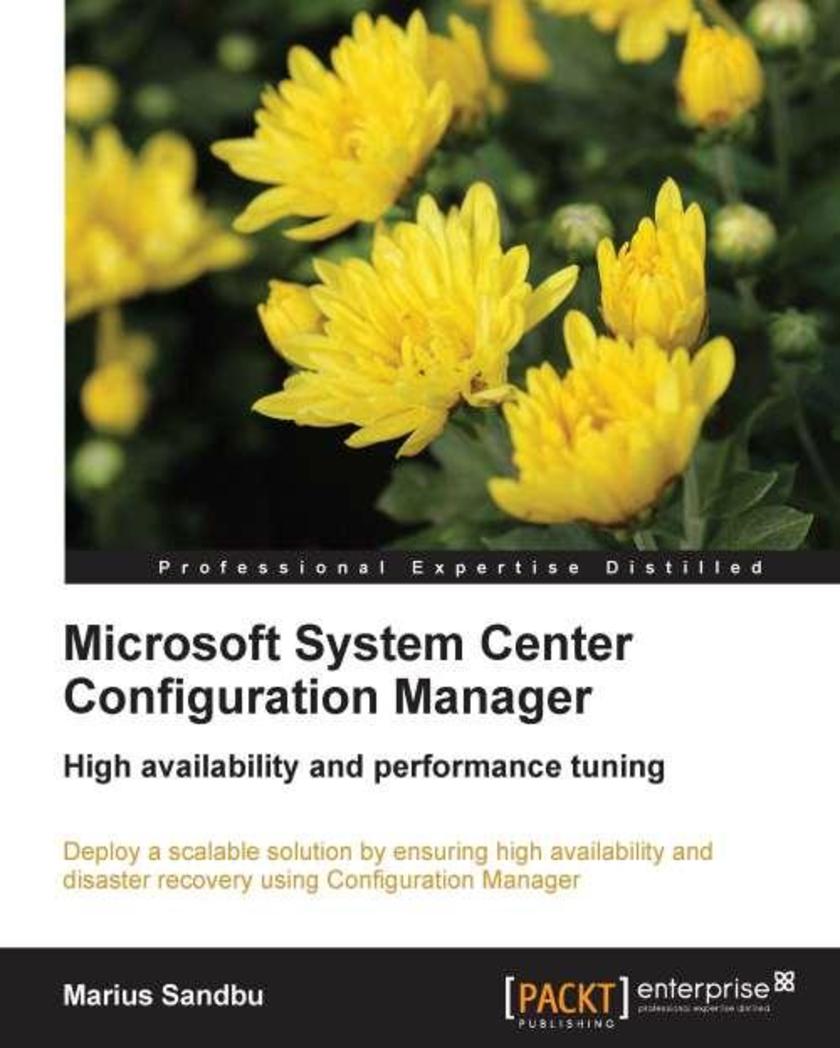
Microsoft SCCM High Availability and Performance Tuning
¥71.93
This book is a step-by-step tutorial that guides you through the key steps in implementing best solutions for high availability and performance tuning. It is split into two distinct approaches: client and site side HA and optimization.Microsoft SCCM High Availability and Performance Tuning is for IT professionals and consultants working with Configuration Manager who wish to learn the skills to deploy a redundant and scalable solution.
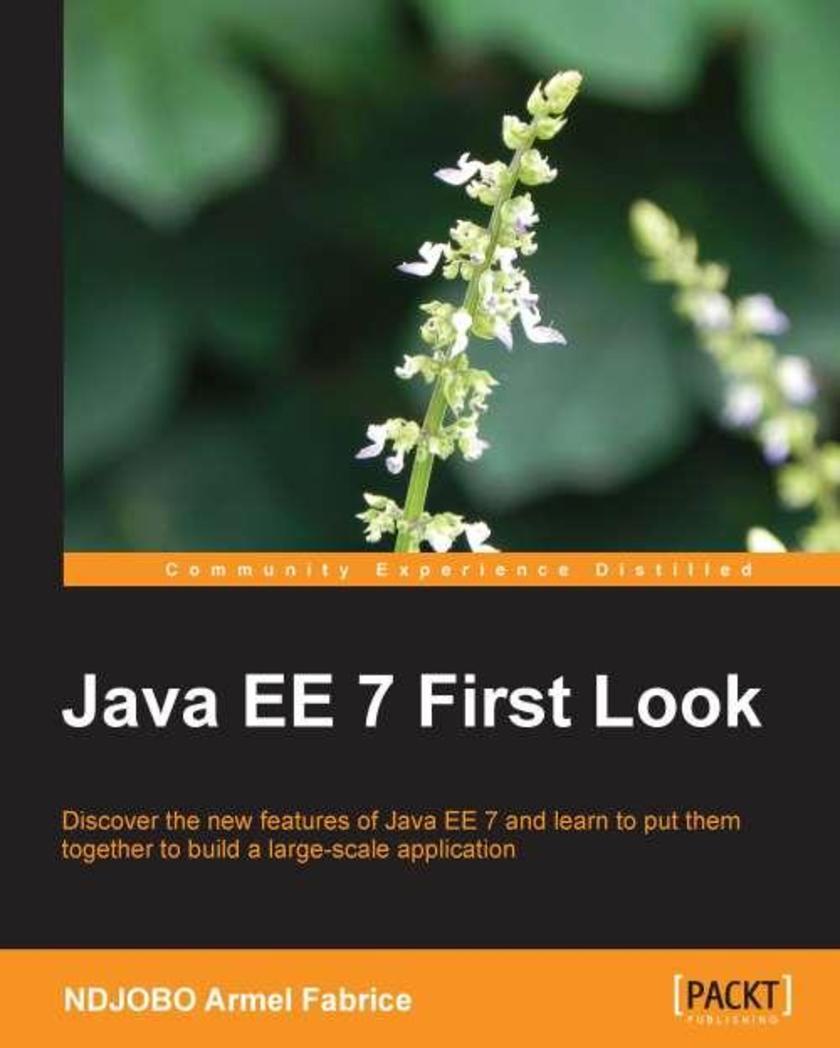
Java EE 7 First Look
¥71.93
An easy-to-follow guide to reveal the new features of Java EE 7 and how to efficiently utilize them.Given the main objectives pursued, this book targets three groups of people with a knowledge of the Java language. They are:Beginners in the Java EE platform who would like to have an idea about the main specifications of Java EE 7.Developers who have experimented with previous versions of Java EE and who would like to explore the new features of Java EE 7.Building architects who want to learn how to put together the various Java EE 7 specifications for building robust and secure enterprise applications
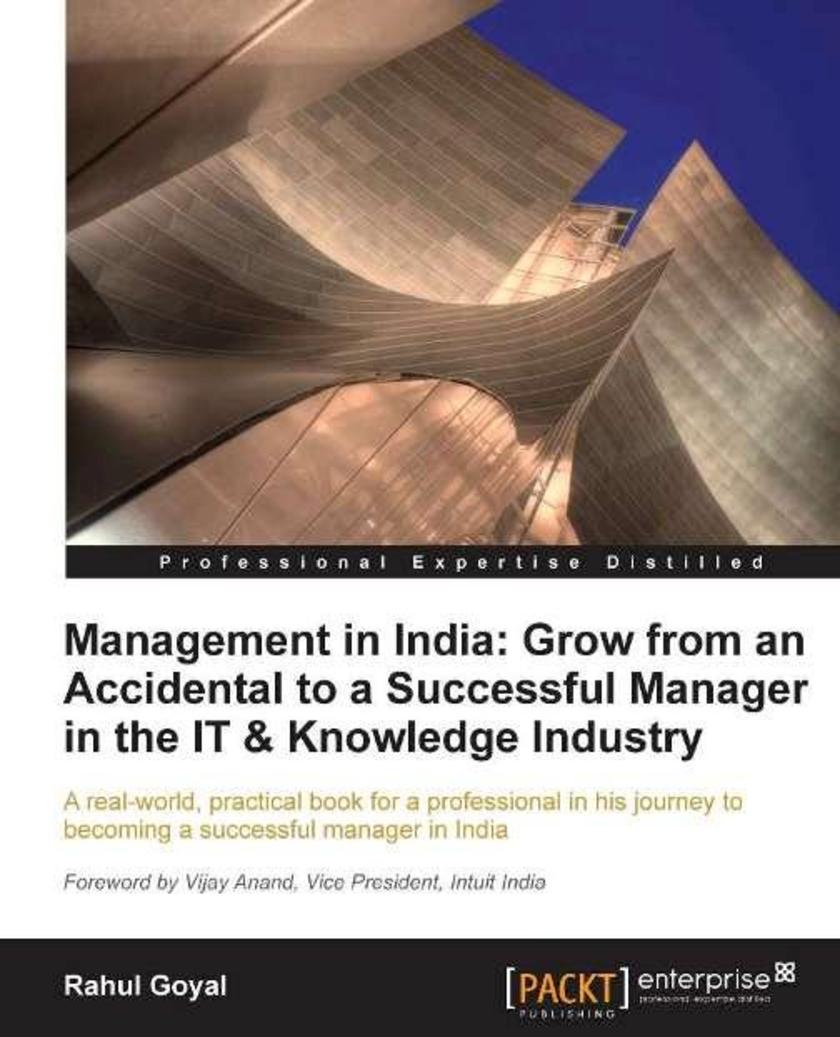
Management in India
¥71.93
This book focuses on the real-world understanding of management concepts so as to maximize learning. It focuses on the various aspects of management covering the common pitfalls and practical insights. Although it explains management frameworks using an Indian context and scenarios, these management principles remain the same across all sectors and so people from other sectors will also benefit from this book. MNCs who want to effectively manage employees of their Indian branches, New Managers, Aspiring managers, and soon-to-be managers, All managers who wish to be more effective by better understanding the management frameworks and how they apply to the Indian IT and ITes sectors – IT Product Development, Services, Backend processing, and BPO, Management principles remain the same across all sectors and so people from other sectors will also benefit from this book
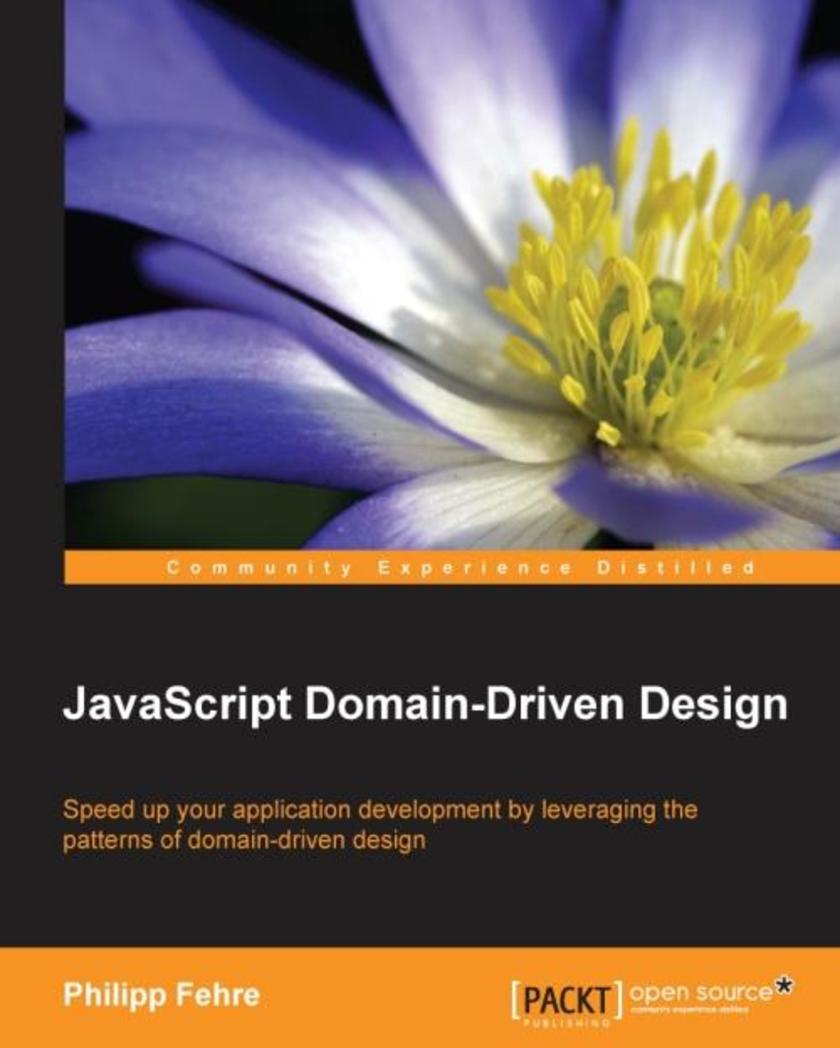
JavaScript Domain-Driven Design
¥71.93
If you are an experienced JavaScript developer who wants to improve the design of his or her applications, or find yourself in a situation to implement an application in an unfamiliar domain, this book is for you. Prior knowledge of JavaScript is required and prior experience with Node.js will also be helpful.




 购物车
购物车 个人中心
个人中心



